L.A. designer Greg Lauren heeds the racial wake-up call
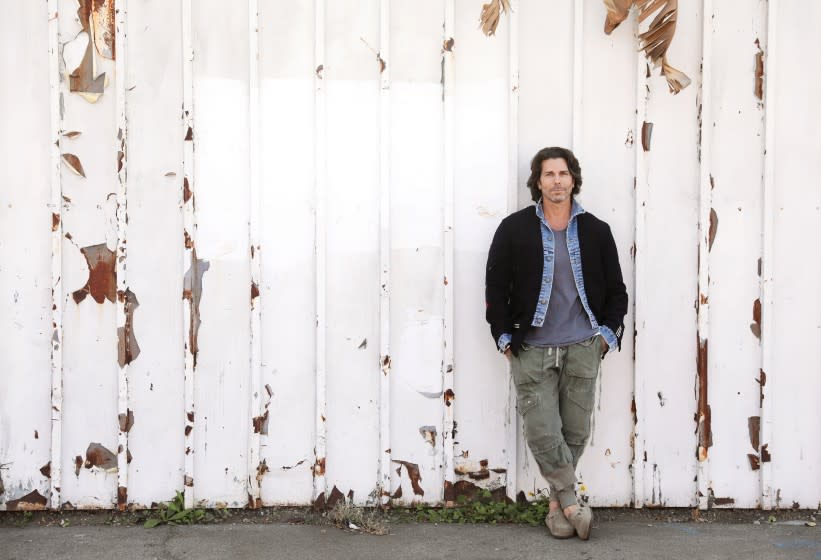
Greg Lauren knows the power of names. When the artist-turned-fashion designer launched his eponymous line in February 2011, it was his last name — and specifically the fact that he's Ralph Lauren’s nephew — that helped open doors and give his meticulously sliced and spliced artisanal take on menswear early exposure.
Today, as his label stands on the cusp of its 10th anniversary, he’s determined that the lesser-known names who have been part of his creative journey — from the stylists working on his look books to the Black quilters of Gee’s Bend, Ala., who inspired his patchwork aesthetic — be recognized for their contributions.
“There is no value to celebrating being around for 10 years if I don't use the opportunity as a platform to shine a light on these key people,” the 50-year-old designer said. “People like [sustainability expert] Dio Kurazawa, who influenced my GL Scraps program, and Fibershed’s Rebecca Burgess, who I haven’t met, but I follow her work on regenerative wool, and that’s inspired some of the pieces in my next collection.”
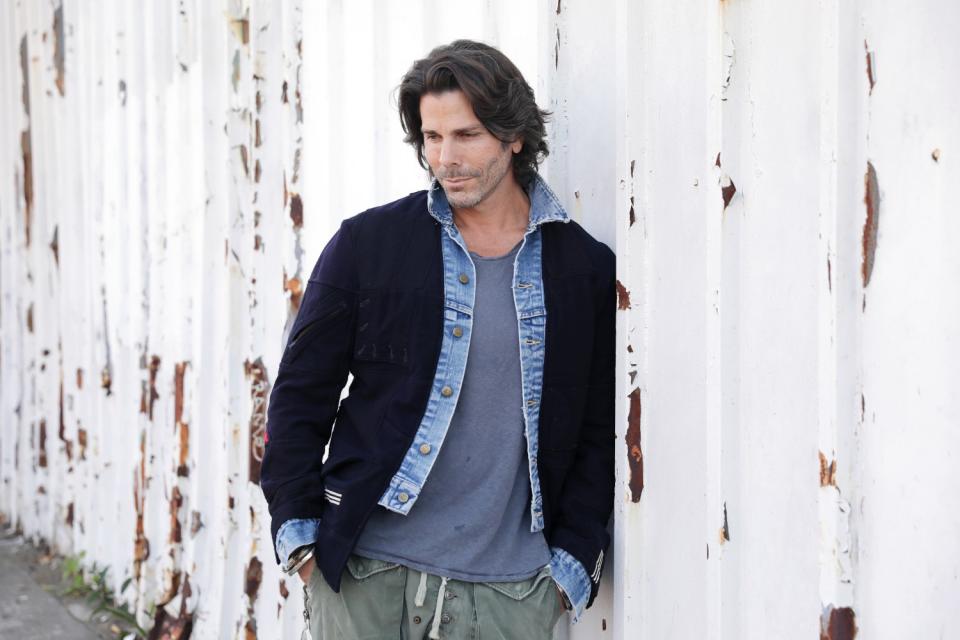
Over the course of a two-hour interview, Lauren, who Zoomed in from the home office space he shares with his wife of 17 years, "Showgirls" and "Saved by the Bell" actress Elizabeth Berkley, rattled off a dozen additional names, highlighting people he's worked with. Among them were Yashua Simmons (who styled Lauren's spring and summer 2021 look book photo shoot) and photographer Emmanuel Sanchez-Monsalve (who shot the look book) as well as designers whose work he admires, including Miko Underwood (founder of the sustainable denim brand Oak & Acorn) and Pyer Moss designer Kerby Jean-Raymond.
Don’t mistake Lauren’s desire to name-check collaborators and creative influences as some kind of 10th-anniversary gratitude tour, though.
The designer said his desire to give credit where credit is due has its roots in the May 25 killing of George Floyd by Minneapolis police officers. “I was deeply moved and deeply affected by [Floyd’s death],” Lauren said. “And I started to look at how the African American experience has impacted me as a designer.”
During this period of creative self-reflection, he said, he came to the realization that the techniques and designs of the quilters of Gee’s Bend, particularly the work-clothes quilts and mending-style patchwork, were something he’d been drawing inspiration from over the years.
“I’ve always loved quilts, torn out pictures of beautiful quilts from exhibitions and made things that looked like them, but I never knew where they came from or who made them,” Lauren explained. “And I realized that’s not OK, that can't happen anymore. As creatives, we have to be accountable to those who contribute to our creative inspiration and the work that we do. And [our work] can't just benefit the brand or the stores or the people that buy it. It has to benefit the people who have unknowingly contributed to our creativity.”
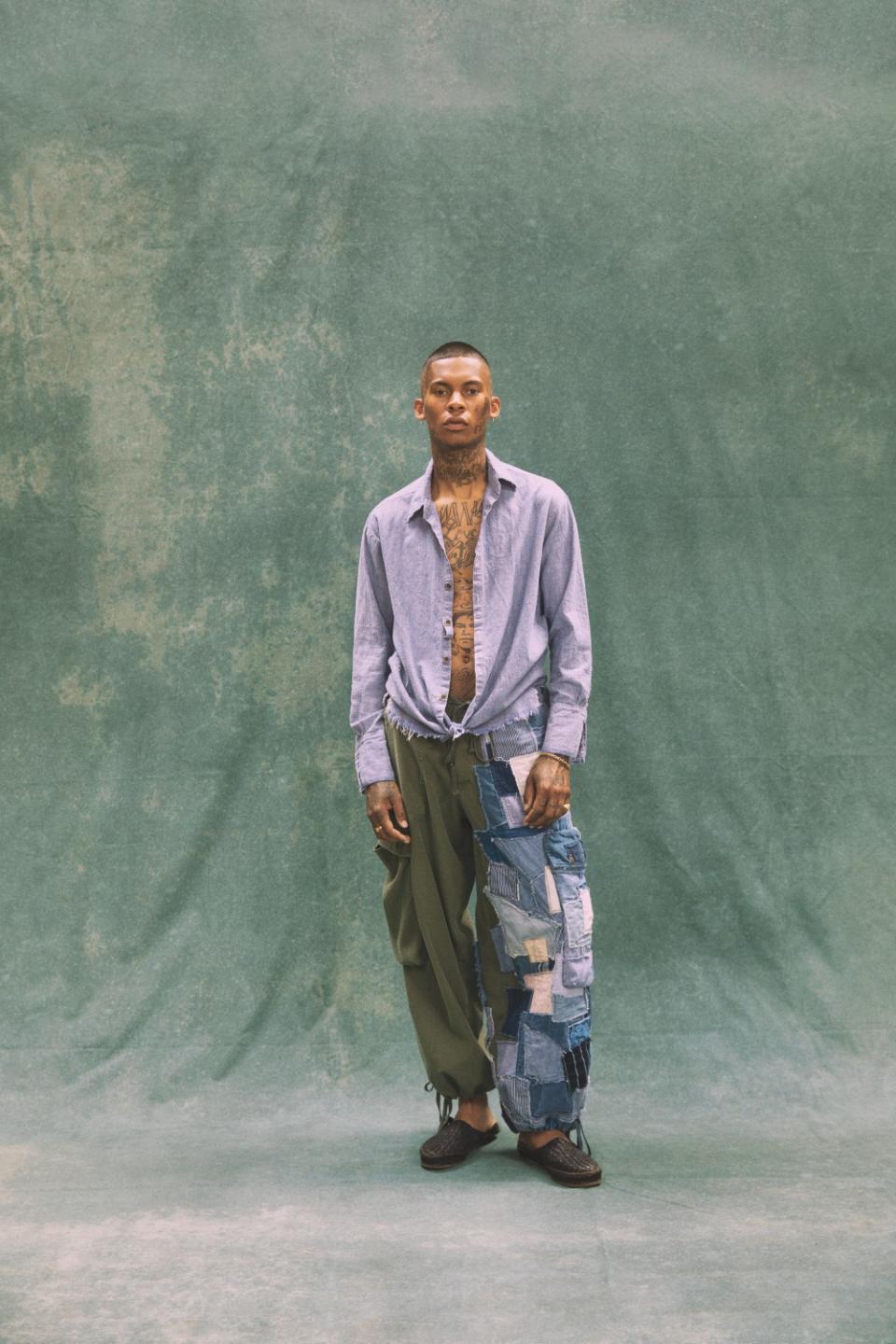
As a result, a portion of proceeds from Lauren’s spring and summer 2021 Deconstructing Americana collection will benefit the Gee’s Bend quiltmakers through the nonprofit Souls Grown Deep Foundation. Lauren said that additional collaborative projects to benefit that quiltmaking community and its individual artists specifically are in the pipeline. (Although he hasn't been to Gee's Bend, he said he "absolutely plan[s] on it when the pandemic allows for it.")
While that charitable element highlights Lauren’s creative debt of gratitude, he knows that a successful white designer from a privileged background giving money to a good cause isn't truly going to move the needle.
That’s why he has publicly pledged to make his 25-person, downtown L.A.-based company (which, he said, has no Black employees) racially equitable. And he's working with the Black in Fashion Council, a group dedicated to advancing and promoting Black talent in the fashion and beauty industry, to create a mentorship program for Black designers. (In late July, he sponsored a panel discussion on racial equity and accountability in the run-up to the group's official Aug. 3 launch, a recording of which can be viewed on YouTube.)
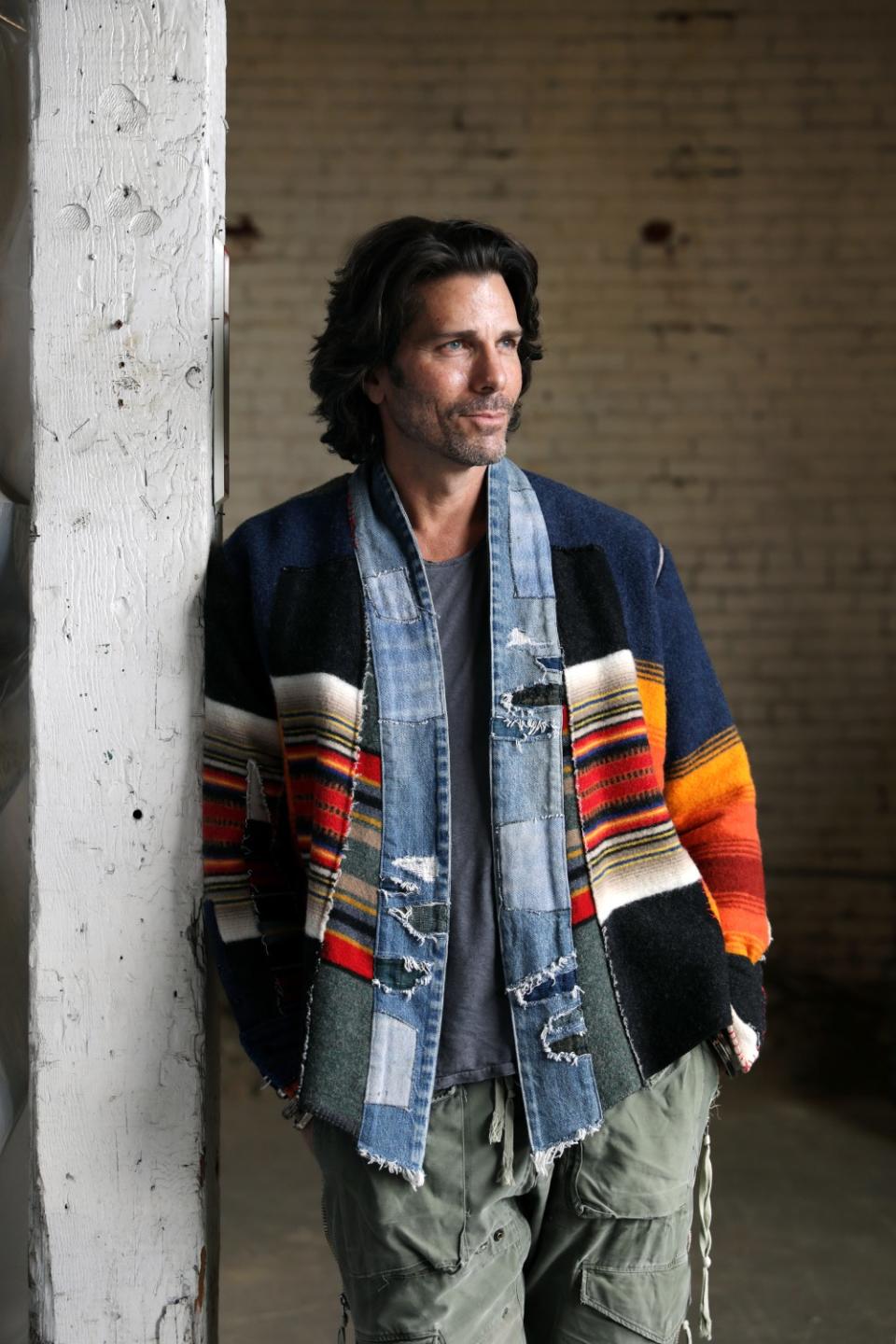
BIFC cofounder Sandrine Charles said Lauren's early and enthusiastic support of the organization has been valuable because of his platform and privilege.
"[That's] at the root of it," Charles said. "Greg is using his ability to navigate in certain circles in the fashion industry — and in the world — to really elevate and champion people who are underrepresented. ... He’s been extremely off the hinges and candid about where people need to speak up and show out, especially people who have the resources, the network and the ability to do things when their counterparts are still struggling."
At the same time he’s trying to make his company more racially equitable, Lauren is working on making it more sustainable.
Although vintage, repurposed and deadstock materials, including military tents and duffle bags, have figured prominently in his work from the outset (he estimates he's used 8,000 U.S. Army tents in his collections to date), a new initiative launched for fall and winter 2020, GL Scraps, doubles down on the upcycling by having L.A.-based quilters patchwork otherwise unusable scraps left over from the production process into yards of fabric that then can be cut into full garments.
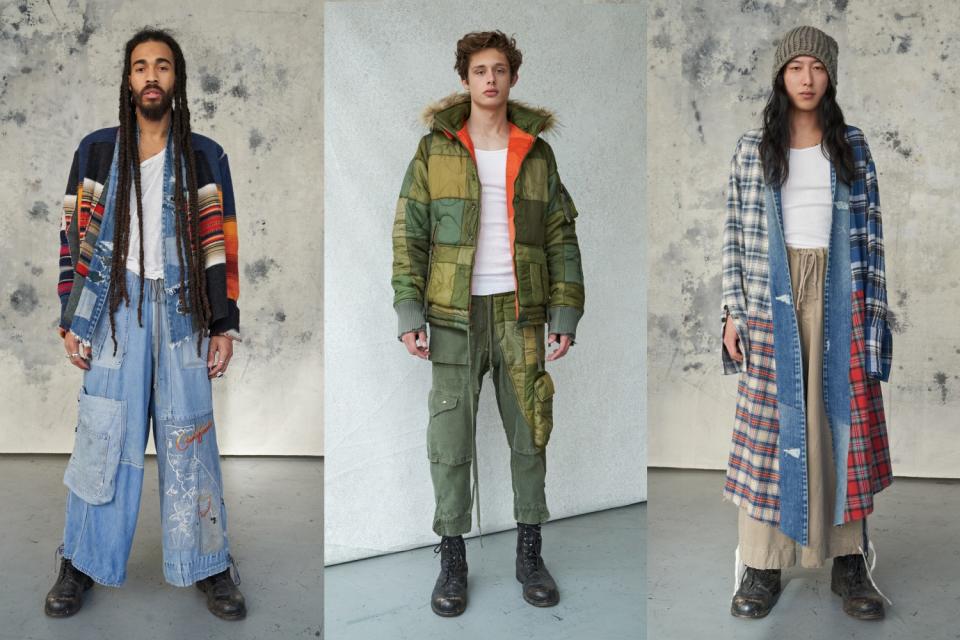
“I fell in love with every scrap and never wanted to throw anything away,” Lauren said, explaining that his attachment to the assortment of irregularly shaped pieces of cloth filled bin after bin and storage unit after storage unit over the years.
In the second round of upcycling, each 40-pound bag of scraps is turned into 13 yards of what Lauren calls scrapwork fabric, enough to cut into two three-piece suits (with the leftover fabric from that process saved to be repurposed yet again).
Scrapworked standouts from the outerwear-heavy fall 2020 collection include voluminous ivory-colored cable knit cardigans ($2,750), cargo-pocketed lounge pants cut from army tents ($1,995), puffy parkas ($5,000) and work coats pieced together from vintage blankets ($3,750).
The spring and summer 2021 collection, which Lauren said was designed with the reality of pandemic living in mind, dials up comfort by way of loose-fitting kimono-inspired jackets, chambray hoodies, boxy quilted workwear jackets and lounge pants spliced together from denim and fleece fabrics.
Lauren said his plan is to build on the leave-no-scrap-behind offerings with each season. As an example of that, he points to an assortment of scrapworked pillows and throws slated to hit retail next month. (In addition to his own website greglauren.com and e-tailer Mr Porter, his label can be found at Maxfield and H. Lorenzo in Los Angeles.)
That marks the first meaningful brand extension beyond apparel and accessories for the Greg Lauren label (well, the second if you include the unisex fragrance launched in 2013 with Barneys New York). And he's hoping it's not the last.
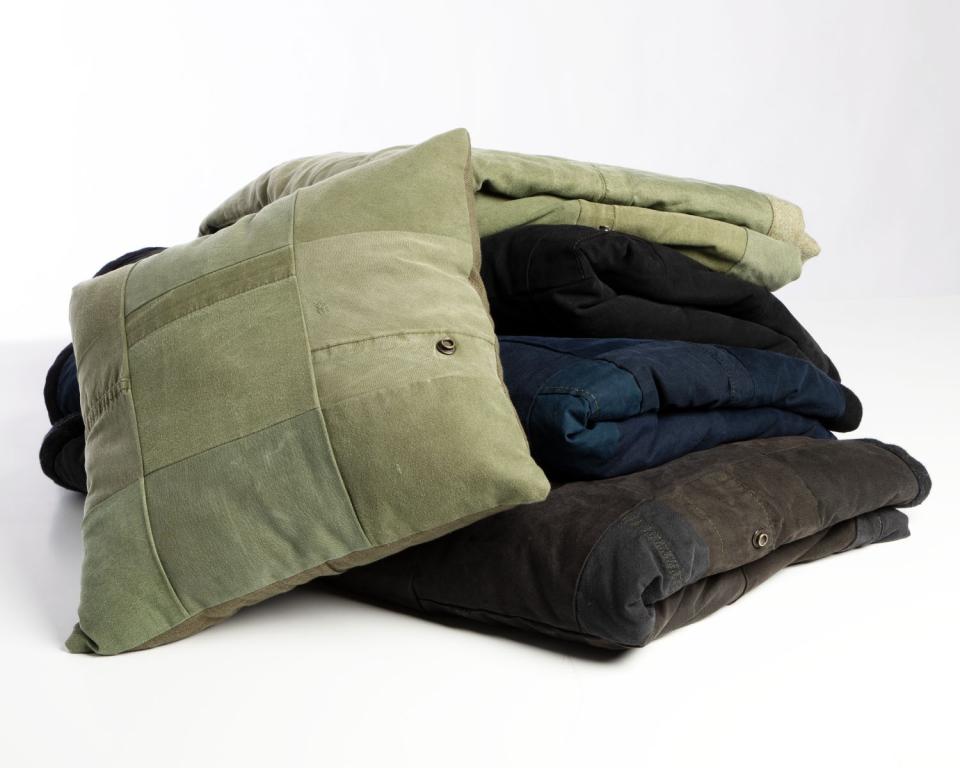
“I spent the first 10 years trying to clarify the Greg Lauren voice and learning how to create a successful business making clothes the artisanal way,” he said. “And now I want to see an entire lifestyle brand built on that same premise. It could be a home collection or an entire home. It could be repurposed paint-splattered Barcelona-style chairs with cushions made from army duffle bags or an elegant dinner table made out of completely found objects and responsibly sourced materials. But I can see building a whole world and a lifestyle that has this brand DNA.”
Knowing Lauren’s penchant for salting away scraps of the past to repurpose for the future, we couldn’t help but ask, with most of this calendar year now in the rearview mirror, what scraps, castoffs and irregular-shaped pieces of the fabric of 2020 might be worth saving and giving a second life in a patched-together future circa 2021?

The designer leaned back, thought for a minute about the question and then answered.
“Looking back on 2020, I’d probably want to screen-print images of all the people that came out and marched, all the people that came out and voted, the people who protested and all the people who worked so hard to get us through this year," Lauren said. "Maybe there’s a way to silkscreen images of our essential workers and first responders and the people who worked the polls … on all kinds of different fabrics.
"You know what?" he said. "You might have just given me an idea.”
This story originally appeared in Los Angeles Times.
